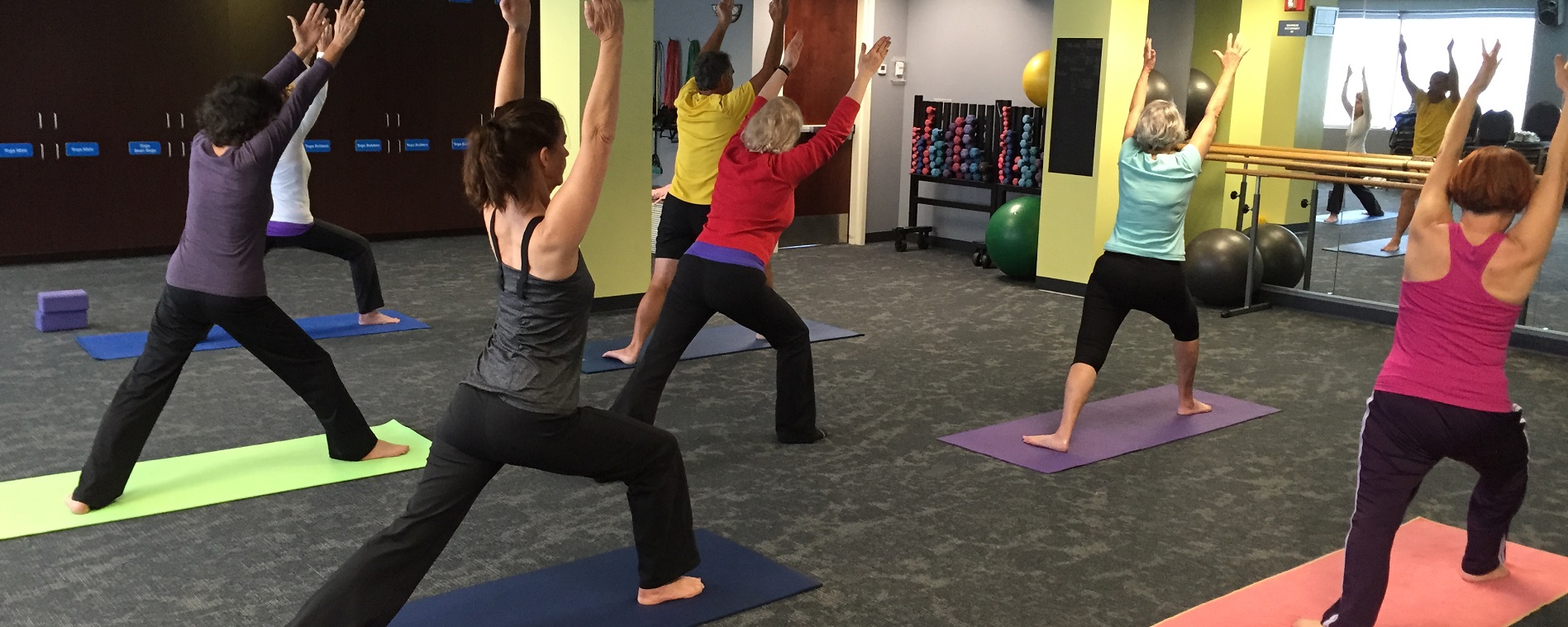By Timilie Losq, Yoga Instructor at Center for Health & Fitness
An Introduction to Yoga
Yoga is an ancient science and wisdom tradition that began thousands of years ago in the Indus Valley. Yoga is often translated as “to unify,” which means bringing your mind and body into a healthy, harmonic balance. It is an integrated mind-body wellness system that incorporates mindful movement, breathing and meditation to cultivate overall well-being. Because yoga has such a vast system of knowledge, it can be intimidating walking into a yoga class for the first time. Here are some frequently asked questions that can help demystify yoga and inspire you to start your yoga journey today!
Do I need to be flexible?
No! A common misconception is that you must be flexible to practice yoga. However, yoga is designed for all bodies. Our bodies are unique, and we each have varying degrees of flexibility — that’s just how we’re made. Practicing yoga will help improve flexibility no matter what your current flexibility is. The beauty of yoga is that it’s customizable and modifiable. You can enjoy its benefits at every level.
What are the health benefits of yoga?
There are so many! Yoga increases flexibility, strength, balance and coordination — which are great for the body and the mind! Yoga also improves breathing, which calms the central nervous system, increases stamina and hones mental focus. For some, it has also proven to ease symptoms of stress and anxiety.
Where should a new yoga student begin?
A beginning-level yoga class is a great place to start. You’ll learn basic breathing techniques (pranayama), poses (asanas) and mindfulness techniques (meditation). If you prefer an environment in which you can ask questions, consider a private or semi-private lesson. In smaller groups, yoga instructors can address your questions and customize a practice that is uniquely suited to your needs.
What are the different kinds of yoga?
There are many! Yoga is a 5,000-year-old practice with variety to match its longevity. That said, here are some basic descriptions of popular yoga styles in the West:
- Hatha Yoga: Ha- means sun, and –tha means moon. In a Hatha yoga class, you will practice yoga poses that strengthen and warm the body (like the sun) and restorative poses that enhance flexibility and cool the body and mind (like the moon). It is common in a Hatha Yoga class to hold poses for 3-5 breaths or more.
- Vinyasa Yoga (Yoga Flow): this western adaptation of yoga translates to “intelligent linking of poses.” In a Vinyasa or Yoga Flow class, you will move through poses in coordination with your breath, with less pose holding.
- Restorative Yoga: Restorative yoga is designed to soothe and relax the mind and body. Props are often used in restorative classes to support the body in holding poses for longer periods of time. You can expect to gently increase flexibility and enjoy deep relaxation in a restorative class.
- Chair Yoga: Chair yoga is an adaptation that allows practitioners to experience the benefits of yoga poses with the support of a chair. This is a great class if mobility is limited, or balance is a concern.
So, why yoga?
Yoga is a great way to enhance your favorite activities. With added flexibility, focus, stamina and strength, imagine how you can improve your existing workout regimen or better, enjoy your favorite physical and mental activities. Plus, yoga classes are a great way to connect with others, feel supported and cultivate a peaceful and compassionate community. So, why not yoga?
Hope to see you on the mat!
Sources:
- Iyengar, B.K.S (1966). Light on Yoga: The Definitive Guide to Yoga Practice
- Kaminoff, L., & Matthews, A. (2021). Yoga Anatomy. (3rd Edition). Human Kinetics.
- Gothe, N.P. &, Keswani, R.K, & McAuley, E. (2016) Yoga practice improves executive function attenuating stress levels. Science Direct.




